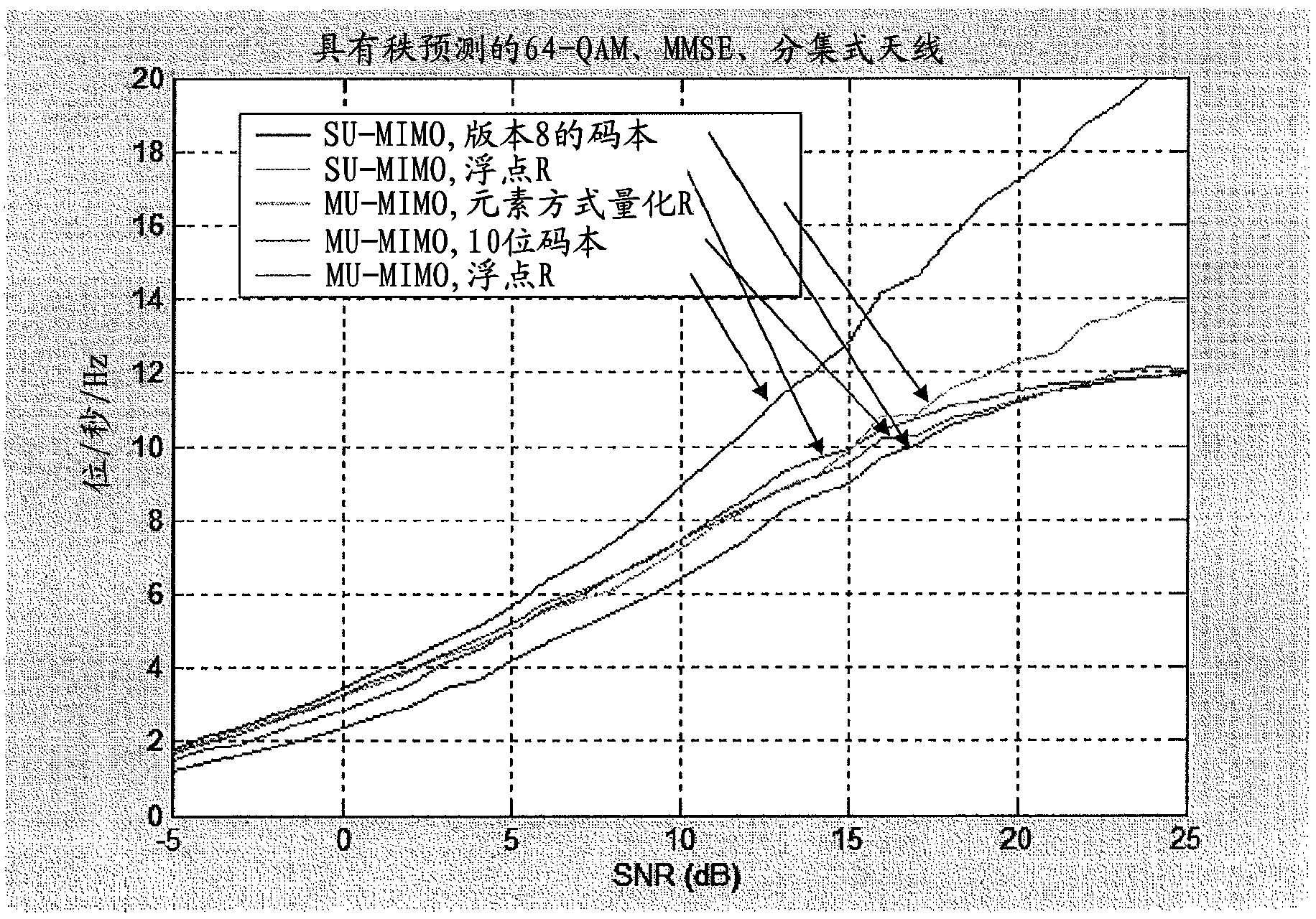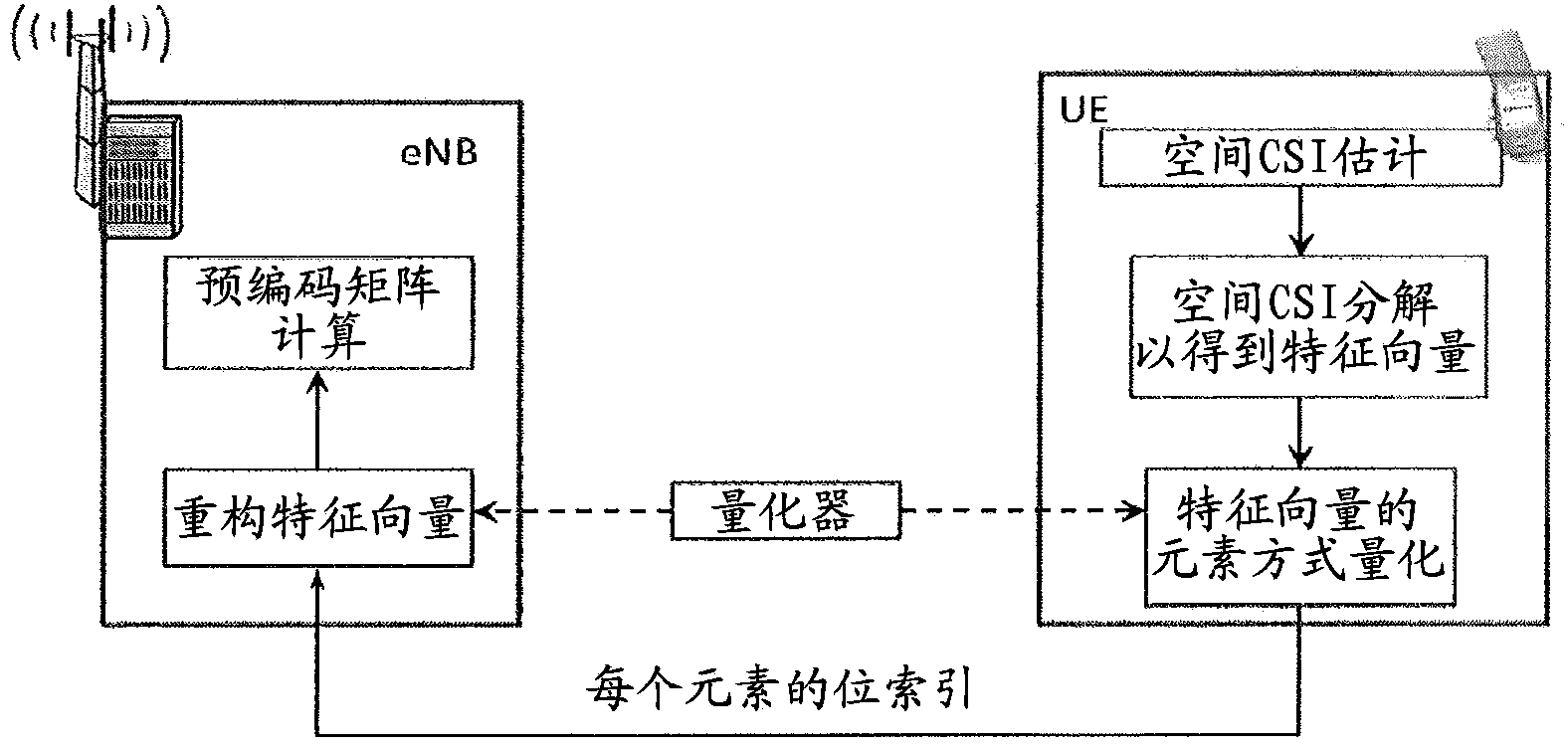Method and system for spatial channel state information feedback for multiple-input multiple-output (MIMO)
A space and channel technology, applied in the field of space CSI feedback, which can solve a large number of baseband processing problems
- Summary
- Abstract
- Description
- Claims
- Application Information
AI Technical Summary
Problems solved by technology
Method used
Image
Examples
Embodiment Construction
[0019] The method and system set forth below provide an efficient way for accurately feeding back the spatial CSI of uncorrelated MIMO channels, especially when the MIMO rank number per user is equal to or greater than 2. The method and system can be used with mobile devices having single or multiple receive antennas.
[0020] The spatially discriminative information for each transmit antenna segment at the receiver side can be derived directly from the spatial channel (explicit feedback), for example, by singular value decomposition (SVD), or take into account the implementation of the receiver (implicit feedback). Implicit feedback assumes specific receiver processing and usually takes the form of a precoding matrix indicator (PMI) or an enhanced version. Explicit feedback attempts to "objectively" capture spatial channel characteristics without considering receiver processing. The spatial channel is measured from the Channel State Information Reference Channel (CSI-RS). C...
PUM
 Login to View More
Login to View More Abstract
Description
Claims
Application Information
 Login to View More
Login to View More - R&D
- Intellectual Property
- Life Sciences
- Materials
- Tech Scout
- Unparalleled Data Quality
- Higher Quality Content
- 60% Fewer Hallucinations
Browse by: Latest US Patents, China's latest patents, Technical Efficacy Thesaurus, Application Domain, Technology Topic, Popular Technical Reports.
© 2025 PatSnap. All rights reserved.Legal|Privacy policy|Modern Slavery Act Transparency Statement|Sitemap|About US| Contact US: help@patsnap.com



